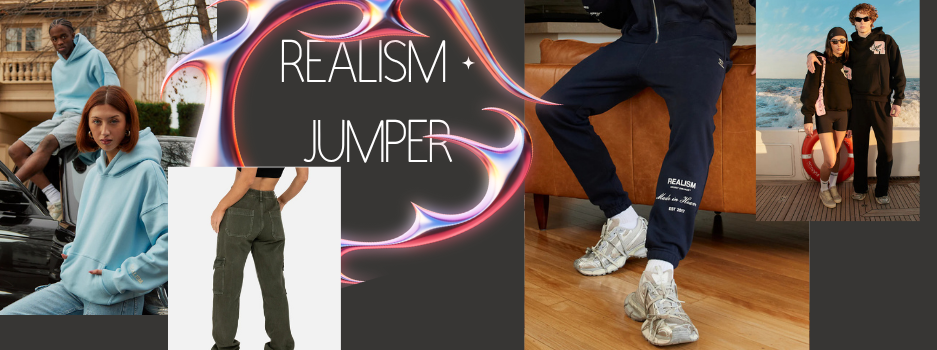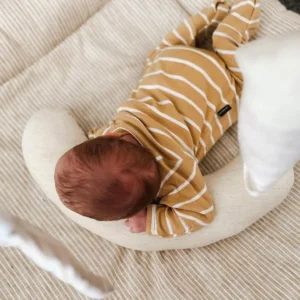Realism Clothing: A Deep Dive into the Movement, Philosophy, and Style
Realism clothing is more than just a style—it’s a cultural statement, a reflection of authenticity, and a reaction against the...

Realism clothing is more than just a style—it’s a cultural statement, a reflection of authenticity, and a reaction against the superficiality of fast fashion and trend-based aesthetics. Emerging from the broader Realism movement in art and literature of the 19th century, realism in clothing design emphasizes practicality, honesty, and a deep connection to real life. It rejects over-the-top ornamentation, instead celebrating functional beauty, neutral tones, raw materials, and the unfiltered human experience.
This article explores the history, core principles, and contemporary influence of Realism clothing, as well as how it shapes both fashion and identity in the modern world.
Historical Roots of Realism
The Realism movement began in France in the mid-1800s, largely as a response to Romanticism, which had dominated the cultural scene. While Romanticism celebrated fantasy, imagination, and idealized forms, Realism focused on depicting everyday life without embellishment. Artists like Gustave Courbet and writers like Honoré de Balzac brought common people and ordinary settings into the spotlight.
This same philosophy gradually seeped into dress and fashion. As industrialization advanced and class structures shifted, clothing began to reflect the more grounded realities of the working and middle classes. This was particularly visible in workwear—simple, durable garments that prioritized function over form. These utilitarian roots are the ancestors of modern Realism clothing.
Core Principles of Realism Clothing
1. Functionality Over Flash
Realism hoodie rejects the purely decorative. Garments are designed for practical use, with features that enhance comfort, utility, and longevity. Think of large pockets, durable stitching, breathable fabrics, and fits that accommodate movement.
2. Honest Materials
Natural fibers like cotton, linen, wool, and raw denim are hallmarks of Realism fashion. These materials age with wear, creating a visible narrative of the wearer’s life. Unlike synthetic fabrics that mask imperfections, Realism embraces the beauty of wear and tear.
3. Neutral and Earthy Color Palettes
Rather than loud prints or flashy hues, Realism clothing typically leans into subdued colors—greys, browns, olive greens, off-whites, and navy blues. These tones reflect the natural environment and foster a sense of calm, humility, and connection to the real world.
4. Minimalist Design
Silhouettes in Realism fashion are clean, unfussy, and timeless. There’s a deliberate avoidance of trends and a focus on classic tailoring. Jackets, shirts, trousers, and outerwear are cut with precision and balance, creating a look that is quietly confident.
5. Sustainability and Longevity
A key ethical dimension of Realism clothing is its sustainable philosophy. Garments are made to last—both physically and stylistically. This encourages consumers to buy less, choose well, and wear items for years rather than months.
The Realism Look: Common Pieces
Here are some staple pieces that define the Realism wardrobe:
- Workwear Jackets (like chore coats and utility vests) – Functional, often with reinforced seams and multiple pockets.
- Raw Denim Jeans – Unwashed, unprocessed denim that molds to the wearer over time.
- Heavyweight Cotton Shirts – Durable and breathable, often in plain weaves or simple stripes.
- Overshirts and Shackets – Hybrid pieces that act as both shirts and light outerwear.
- Chunky Knitwear – Crafted from natural wools for warmth and texture.
- Minimal Footwear – Boots or sneakers made from real leather or canvas, built for durability rather than show.
Realism vs. Other Fashion Movements
Realism clothing contrasts sharply with many modern fashion trends:
- Versus Fast Fashion: While fast fashion thrives on rapid cycles, flashy designs, and disposable quality, Realism clothing is slow, intentional, and built to endure.
- Versus High Fashion: High fashion often pushes creative boundaries with abstract forms, exaggerated silhouettes, or conceptual themes. Realism, on the other hand, grounds itself in everyday life, celebrating normalcy.
- Versus Streetwear: Streetwear, while also rooted in real-world experiences, tends to embrace logos, hype, and youth culture. Realism clothing is more muted and introspective, avoiding overt branding or seasonal drops.
Cultural and Psychological Dimensions
Realism Jumper doesn’t just express a style—it reflects a mindset. Those who adopt this aesthetic often value transparency, honesty, and groundedness in other parts of their lives as well. Wearing Realism is a quiet rebellion against consumerism and a statement of inner clarity.
It also appeals to individuals interested in craftsmanship and heritage. The appreciation of how a piece is made, where the fabric comes from, and how it ages over time creates a deeper connection between wearer and garment. There’s an emotional and philosophical depth in choosing clothing that reflects one’s true lifestyle rather than aspirational fantasy.
Contemporary Brands Embracing Realism
Several modern fashion labels embody Realism principles, even if they don’t explicitly use the term. Notable examples include:
- Margaret Howell – Known for minimalist, utility-focused clothing in earthy tones.
- Engineered Garments – Combines workwear inspiration with impeccable craftsmanship.
- Arpenteur – A French label blending traditional fabrics and Realist silhouettes.
- A.P.C. – Offers pared-down denim and basics with a strong emphasis on timeless quality.
- Studio Nicholson – Structured clothing with architectural precision and muted palettes.
Even mainstream labels are beginning to include “realism-influenced” lines—capsule collections with less branding, higher durability, and a more utilitarian look.
Conclusion
Realism clothing is not just a passing trend—it’s a lifestyle rooted in integrity, utility, and a connection to the everyday. In an era of overconsumption and hyper-stimulated digital fashion, Realism offers a quiet, powerful alternative. It reminds us that what we wear can be a reflection of who we are—not who we pretend to be.



